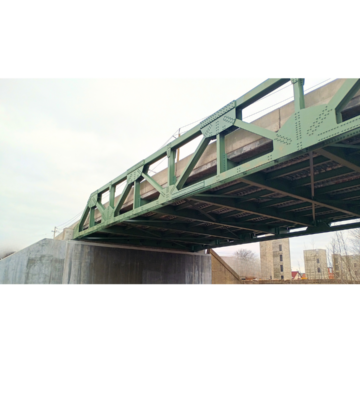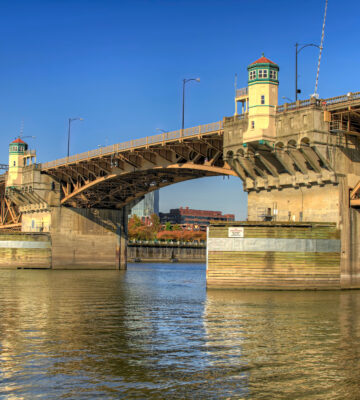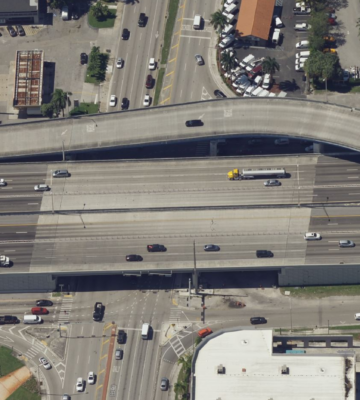H&H was selected to perform the required replacement of the approach span superstructure & swing span utilizing the existing substructure of the Ben Sawyer Swing Bridge. The original bridge was constructed in 1943. The bridge provided a center pivot type Pratt Truss swing span which spanned over the ICWW 94-foot channel, connecting Mt. Pleasant with the adjacent Sullivans Island. Steel plate girder approach spans (12 total) flanked each side of the swing span over the ICWW and the marsh banks. The bridge carried two lanes of traffic with very narrow sidewalks. The total length of the bridge was 1154 feet with a 245-foot swing span. The bridge was at the end of its useful life due to severe corrosion to structural members and bridge width geometry which did not allow safe passage for bicyclists and pedestrians.
The scope of the project required replacement of the approach span superstructure and swing span utilizing the existing substructure. Community involvement requested that the new bridge look identical to the existing bridge with the exception of widening the bridge cross-section to accommodate a 5’-6” sidewalk. The portal brace and mid-height brace of the swing span truss, bridge railing, approach span cantilevered brackets, and the operator’s house were important features of the existing bridge that were to be duplicated in the design.
The project was let as a design-build contract with PCL Constructors Inc. as the General Contractor and Hardesty & Hanover as the Engineer of Record. The new design is a duplicate of the former bridge with the exception of utilizing rolled HP sections for the truss members in lieu of riveted built up members. The roadway deck utilized an Exodermic concrete deck to minimize the dead load of the structure on the existing pivot pier. The swing span rotates using conventional rack pinion machinery turned by a DC electric motor and drive controlled by a PLC.
The approach span utilized welded steel plate girders supported on isolation bearings to meet seismic requirements of the region. The substructure was analyzed for seismic forces and concluded no improvements to the substructure were required even with the addition of a 10% additional dead load.




